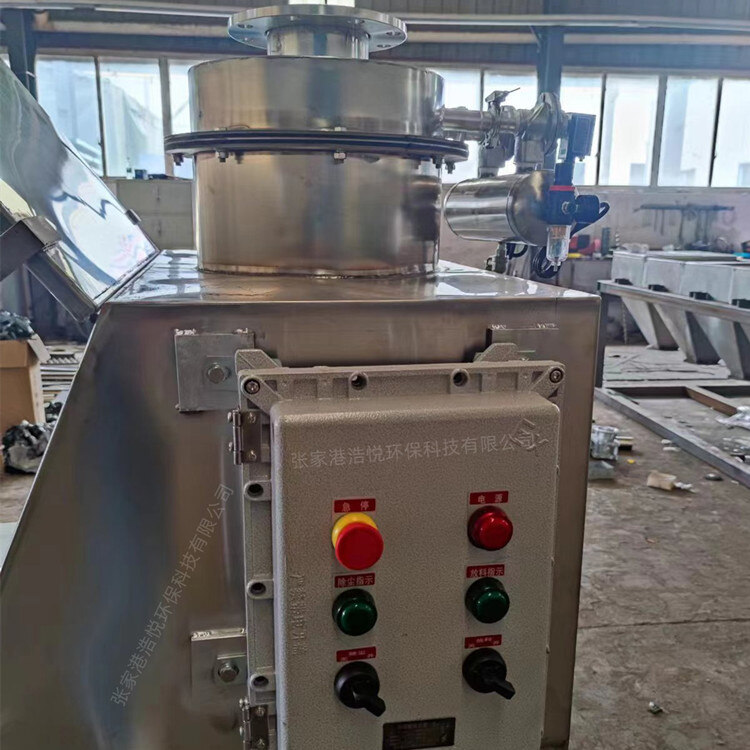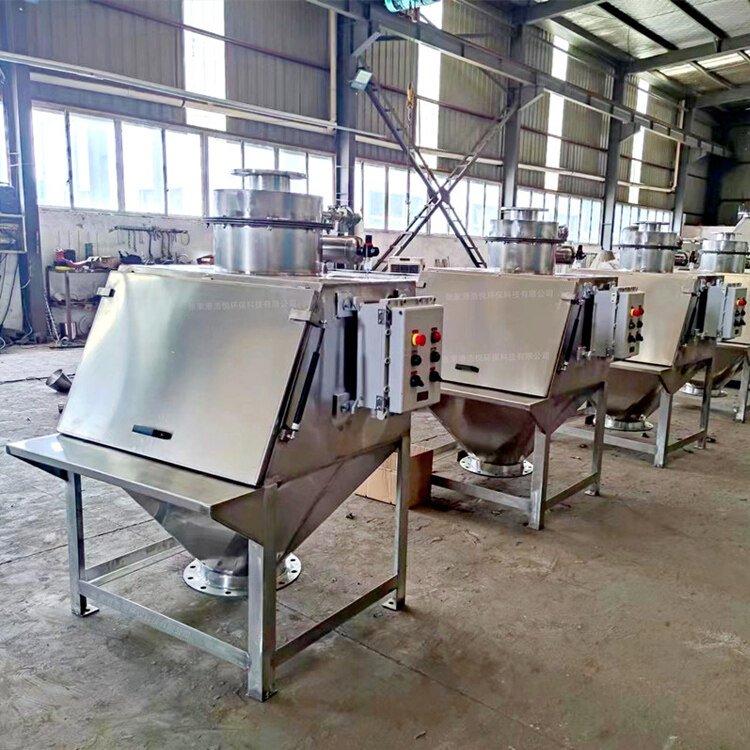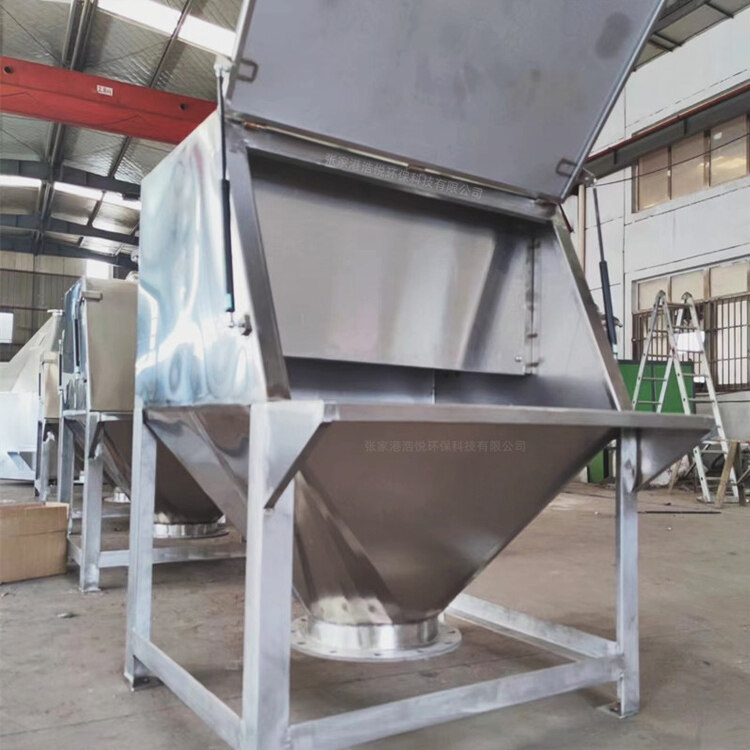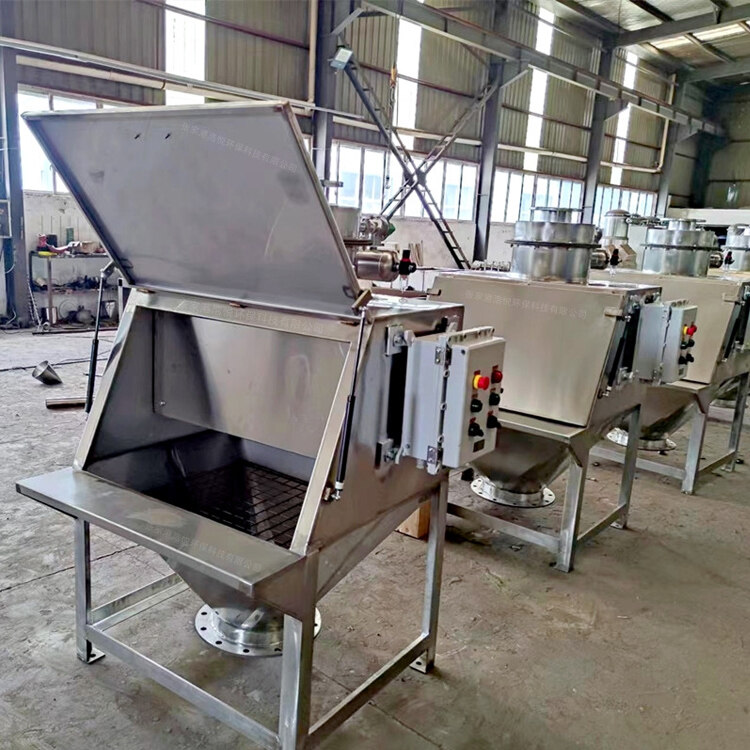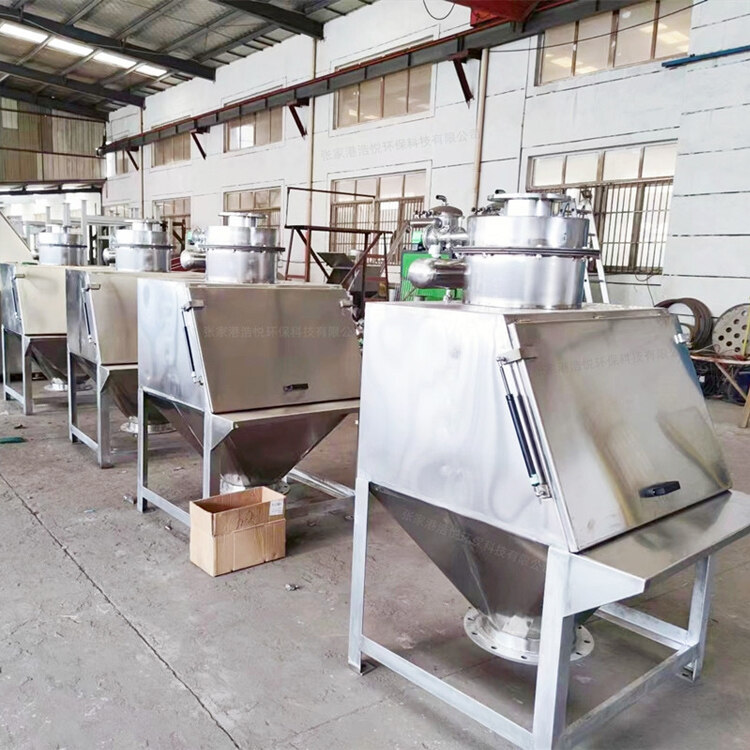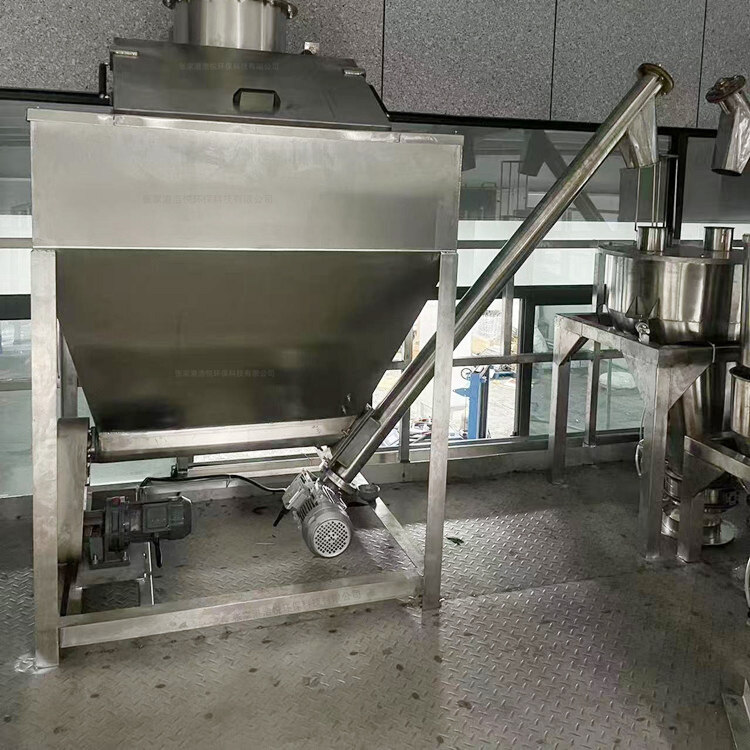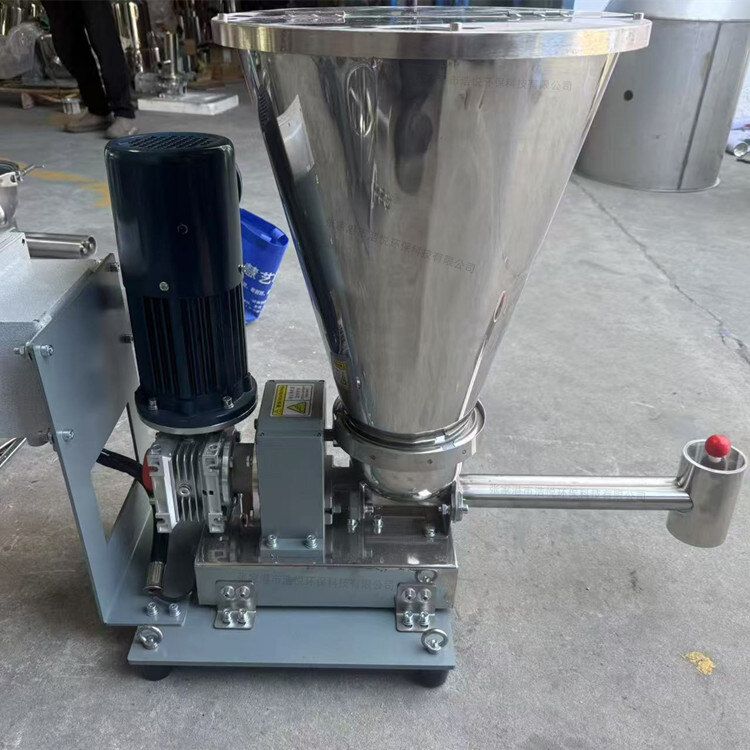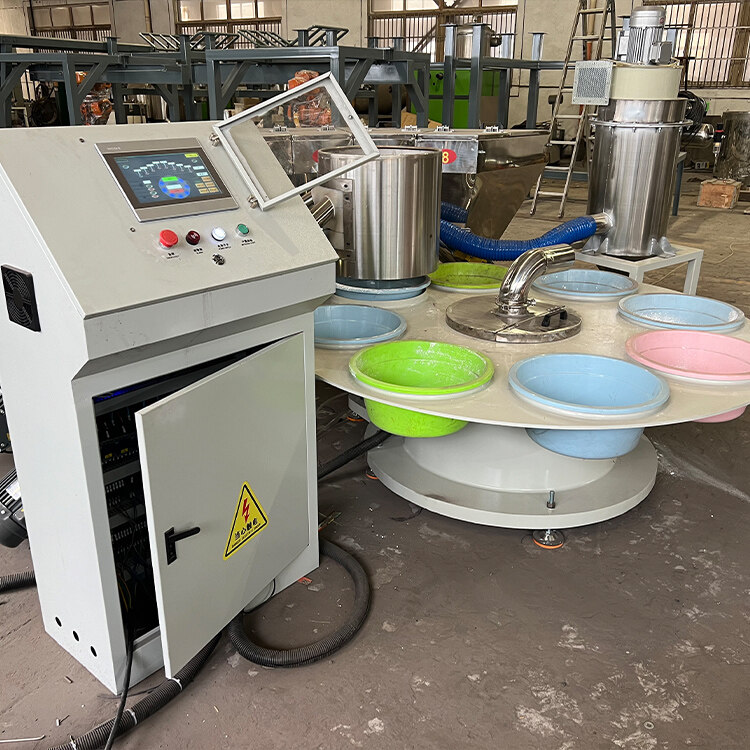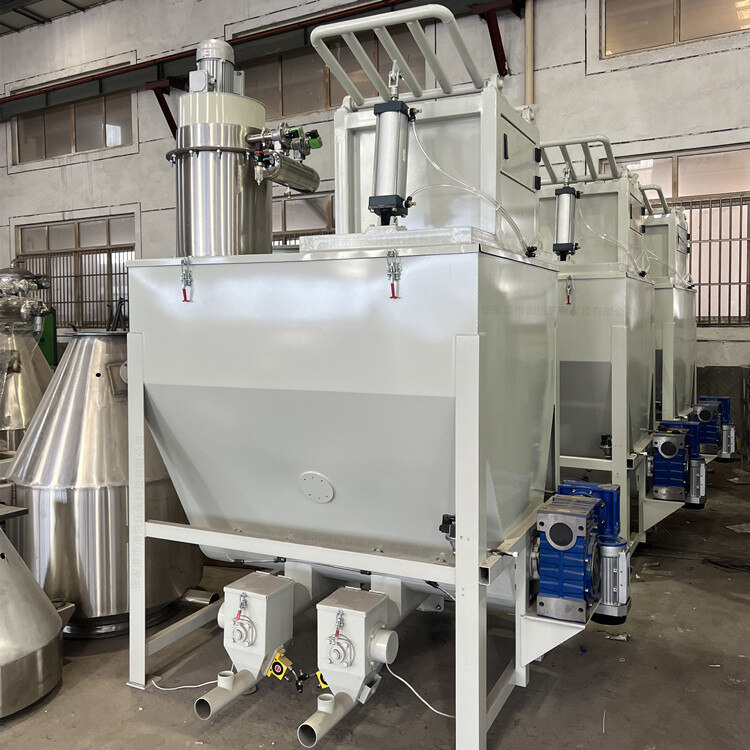- Introduction to automatic batching machine and fully automatic batching machine equipment
- The powder metering system tells you about the introduction of the mixing and drying machine
- 1000kg vacuum feeding machine
- Fully automatic small material batching system
- Research on Innovation of Automatic Weighing Machine Technology
- Design and operation of automatic batching system using PLC, industrial computer and frequency converter
Feeding station
- Category:Feeding station
- Hits:146次
- Release Date:2025-06-30
- Share:
- Inquiry
- Details
In modern industrial production processes, from chemical and food industries to pharmaceuticals, building materials, and many other fields, precise material feeding and efficient processing are key links in ensuring production continuity and product quality. As the core equipment for transferring materials from storage to production, the feeding station effectively improves production efficiency, reduces labor intensity, and minimizes dust pollution and material waste through operations such as receiving, measuring, conveying, and pre-processing materials. The following will provide a detailed introduction to the structure, working principle, classification characteristics, application scenarios, and development trends of the feeding station.
1、 The structural composition and working principle of the feeding station
(1) Basic structural composition
The feeding station usually consists of six core parts: material receiving unit, measuring unit, conveying unit, dust removal unit, control unit, and safety protection unit.
Material receiving unit: This is the basic part of the feeding station to receive materials. The design of the receiving unit varies depending on the material form (powder, particle, block, etc.) and the feeding method (manual feeding, mechanical feeding). Common forms include open feeding ports, closed feeding bins, and some are equipped with auxiliary devices such as guide troughs and vibrating hoppers to ensure smooth entry of materials into the station. For example, for manual feeding scenarios, ergonomic feeding port heights and tilt angles will be set to facilitate operator operations.
Measurement unit: used for precise control of material feeding volume. According to production process requirements, volume measurement, mass measurement, or flow measurement methods can be selected. Common equipment includes electronic belt scales, spiral measuring scales, flow meters, etc. For example, in production processes that require high-precision proportioning, high-precision weighing sensors are used in conjunction with measuring buckets to achieve precise control of material quality.
Conveyor unit: responsible for conveying the received and measured materials to the next production stage. Common conveying methods include spiral conveying, belt conveying, pneumatic conveying, and pipe chain conveying. Different conveying methods are suitable for materials with different characteristics, such as pneumatic conveying, which is suitable for long-distance conveying of powdered materials and can effectively avoid dust leakage; Belt conveyor is suitable for high flow conveying of granular materials.
Dust removal unit: In order to reduce the dust generated during material feeding and transportation, ensure the safety of the working environment and the health of operators, the feeding station is equipped with specialized dust removal devices. Common types include pulse bag dust collectors, filter cartridge dust collectors, etc., which purify dusty air through negative pressure suction and filtration technology to meet environmental standards for emissions.
Control unit: with PLC (Programmable Logic Controller) or industrial computer as the core, paired with Human Machine Interface (HMI). The operator can set the material feeding amount, conveying speed, dust removal equipment operating parameters, etc. through the control unit. The system automatically coordinates the work of each unit according to the preset program and monitors the equipment operating status in real time. It has the functions of fault diagnosis, alarm prompt, and data recording.
Safety protection unit: including emergency stop button, protective fence, safety light curtain, overload protection device, etc., to comprehensively ensure the safety of equipment operation and the personal safety of operators. For example, when an abnormal situation is detected or personnel accidentally enter a dangerous area, the safety light curtain will trigger an emergency stop to prevent accidents from occurring.
(2) Working principle
The workflow of the feeding station revolves around "receiving measuring conveying dust removal". Firstly, the materials are manually or mechanically fed into the receiving unit, and then enter the measuring unit through the diversion device. The measuring unit accurately weighs or measures the material according to the preset measurement value, and stops feeding when the set amount is reached. Subsequently, the conveying unit is activated to transport the measured materials to the target location, such as the reaction kettle, mixer, or production line workstation. During the process of material feeding and conveying, the dust removal unit works synchronously. The negative pressure generated by the fan is used to suck the generated dust into the dust removal equipment for filtration and purification. The purified air is discharged outdoors, and the collected dust is returned to the material system or processed centrally. The control unit monitors the data of each link in real-time throughout the entire process. In case of any abnormalities (such as measurement deviation, conveying blockage, dust removal equipment failure, etc.), an alarm is immediately issued and corresponding measures are taken to ensure the stable operation of the feeding station.
2、 Classification and characteristics of feeding stations
(1) Classify by material form
Powder material feeding station: suitable for powder materials such as flour, cement, carbon black, pigments, etc., focusing on solving the problem of dust flying. Usually, a closed design is adopted, equipped with efficient dust removal devices and anti caking measures (such as vibration arch breaking devices) to ensure smooth material feeding and transportation.
Granular material feeding station: focusing on the flowability and conveying efficiency of granular materials such as grains, sand and gravel, and plastic particles. Open or semi open designs are often used, combined with vibrating feeders, belt conveyors, and other equipment, to achieve stable material feeding and rapid conveying.
Block material feeding station: mainly used for block materials such as ore, wood, metal blocks, etc. It is generally equipped with a crushing device, which first crushes the block materials into suitable sizes, and then measures and transports them.
(2) Classified by degree of automation
Manual feeding station: mainly relies on manual operation to complete material feeding, with a simple structure and low cost, suitable for small production enterprises or experimental scenarios. But there are disadvantages such as high labor intensity, low feeding accuracy, and serious dust pollution.
Semi automatic feeding station: Some processes are automated, such as material measurement, transportation, or dust removal, which are automatically completed by equipment, while feeding operations still require manual intervention. Compared to manual feeding stations, its efficiency and accuracy have been improved, while reducing some labor intensity.
Fully automatic feeding station: The entire process from material receiving, measuring, conveying to dust removal is automated and controlled. Through the linkage between the control system and upstream and downstream equipment, the operating parameters can be automatically adjusted according to production needs. It has significant advantages such as high precision, high efficiency, low labor cost, and low dust pollution, and is widely used in large-scale industrial production.
3、 Application scenarios of feeding stations
(1) Food and beverage industry
In food processing, feeding stations are used for precise feeding of materials such as flour, sugar, salt, additives, etc., ensuring consistency in product taste and quality. For example, in the production of baked goods, the product qualification rate can be improved by accurately measuring materials such as flour, yeast, and sugar powder; In the process of beverage blending, the accurate feeding of juice concentrate, sweetener, essence and other raw materials is realized to ensure the stable taste of the beverage.
(2) Chemical industry
In chemical production, the feeding station can safely release and measure hazardous materials such as corrosive, flammable, and explosive materials. In the process of coating production, precise control of the input of resin, solvent, pigment and other raw materials can improve the performance of the coating; In the field of petrochemicals, precise deployment of catalysts and additives can help improve chemical reaction efficiency and product quality.
(3) Pharmaceutical industry
The pharmaceutical industry has extremely high requirements for the precision and hygiene of material delivery. The feeding station adopts a fully enclosed design, which complies with GMP (Good Manufacturing Practice) standards, ensuring the accurate ratio of active ingredients and excipients, avoiding contamination and errors caused by manual operation, and ensuring the compliance and effectiveness of drug production.
(4) Building materials industry
In the production of building materials such as cement, dry powder mortar, and concrete, feeding stations are used to precisely control the ratio of cement, sand, gravel, additives, and other materials, optimize production processes, improve the strength, durability, and other performance of building materials products, and meet the quality requirements of construction projects.
4、 The development trend of feeding stations
With the advancement of Industry 4.0 and intelligent manufacturing, feeding stations are developing towards intelligence, integration, and green direction. In terms of intelligence, artificial intelligence and Internet of Things technology are introduced to achieve remote monitoring, fault prediction, and automatic optimization of devices, such as real-time analysis of device operating status through sensor data and early warning of potential faults; In terms of integration, it deeply integrates with the enterprise's ERP (Enterprise Resource Planning) and MES (Manufacturing Execution System) to achieve collaboration in production planning, material management, and feeding operations; Greening is reflected in further reducing energy consumption, reducing dust emissions, and adopting environmentally friendly materials, such as developing new and efficient dust removal technologies, improving dust collection efficiency, and reducing environmental impact. At the same time, in response to the needs of special industries and new materials, the feeding station will continue to innovate its design and expand its application areas.


